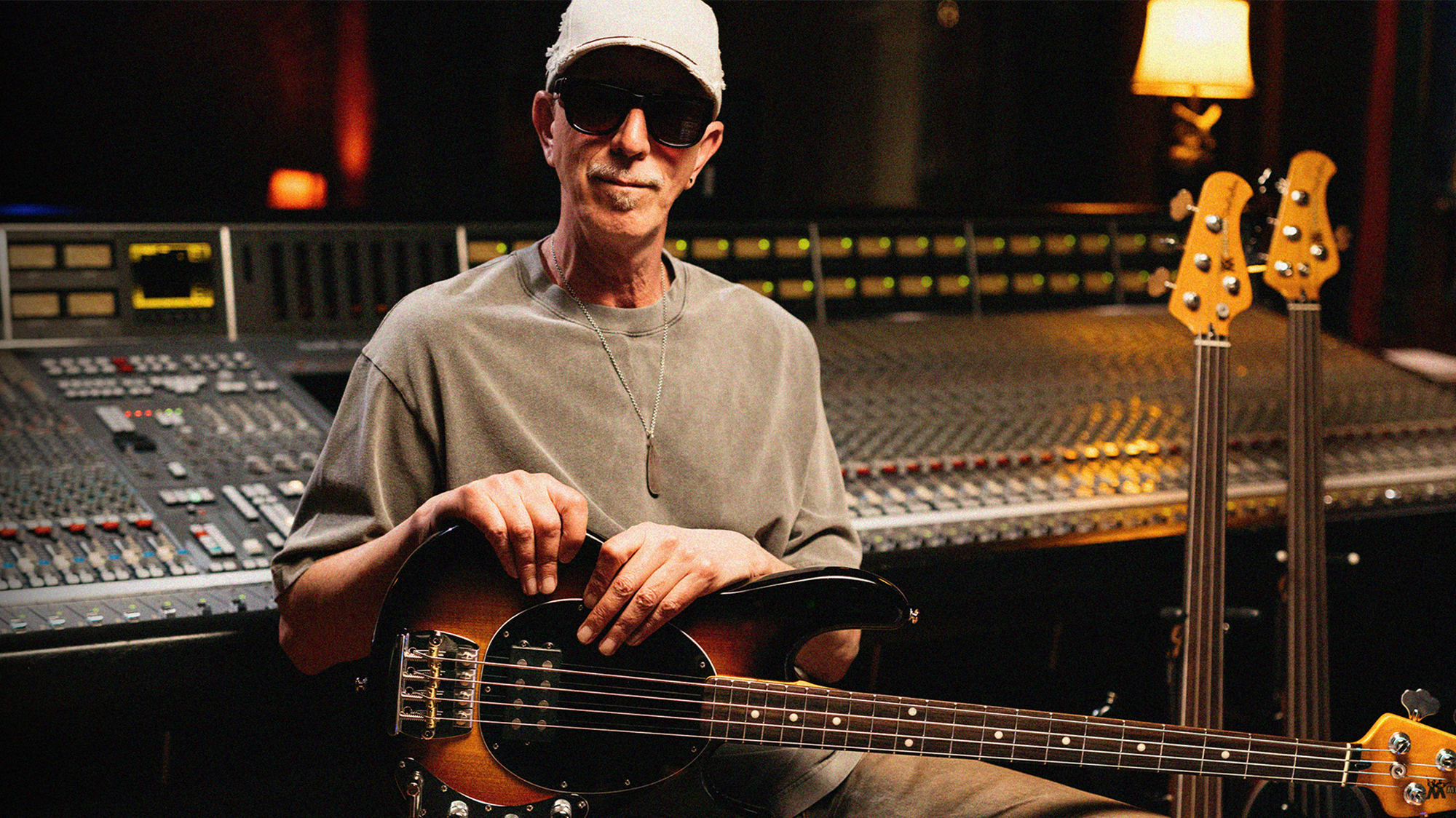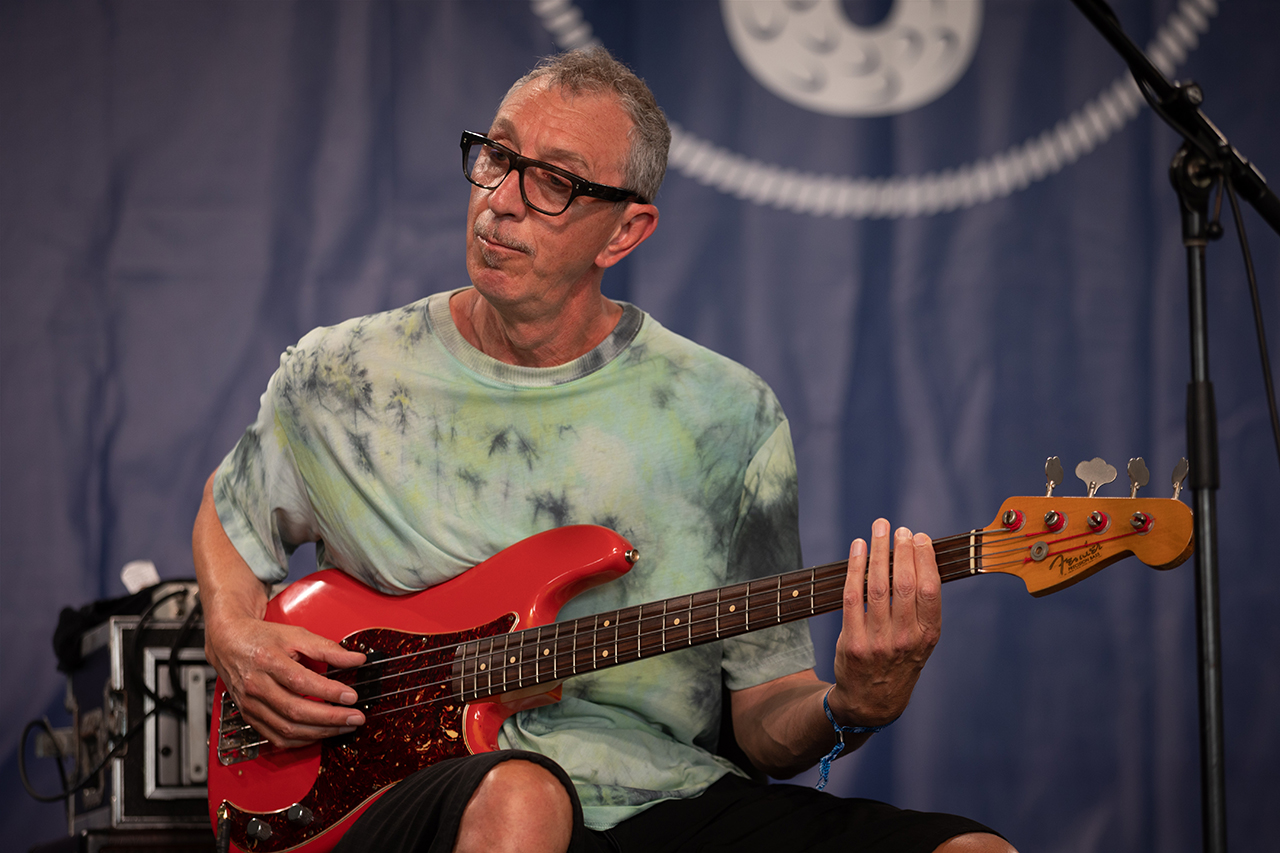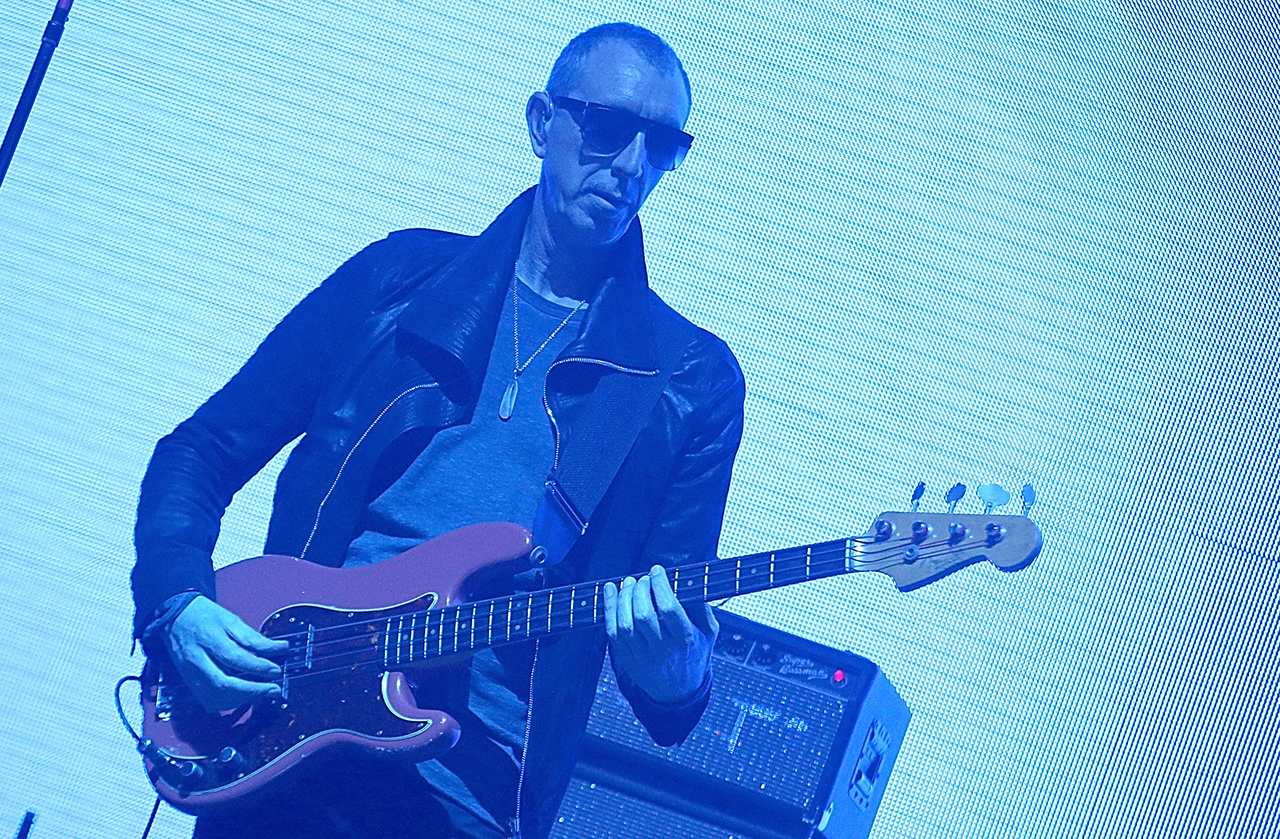
Though Pino Palladino’s resume is staggering, his approach to work is quite simple: “I just turn up with a couple of basses, to be quite honest,” he tells Bass Player. Of course, it’s not that simple.
Through the ’80s and ’90s his beloved fretless StringRay appeared on records by Paul Young, David Gilmour, Pete Townshend, Eric Clapton, Jeff Beck, Don Henley, Phil Collins, Tears For Fears, Go West and Joan Armatrading, among others. That iconic instrument has now been commemorated by Ernie Ball Music Man with a new signature model.
“Miley Cyrus, Ed Sheeran, Beyoncé, Harry Styles – they’re all great artists,” he says. “Their songs sound great before I even get to them. The question is, ‘How do I fit in but also add something?’ That process has never changed.”
I wasn’t particularly ambitious when I started playing. It wasn’t like, as a teenager, I thought I’d be a session musician. I just wanted to play guitar or bass in a band.

Did you choose the bass or did it choose you?
It chose me, definitely. I was really into sports in my early teens, but a short time after I started playing guitar, I could hear chords and recognize them, even if I didn’t have a guitar. I didn’t realize that was unusual!
How did you get your start in session work?
It just happened. I saw a couple of concerts with backing musicians playing behind solo artists, and I thought, “They sound really good, but they’re not a band as such. I wonder who they are?”
Early on in your session career, you began using a Music Man StingRay fretless bass. What led to that?
I grew up in Cardiff, Wales, and I’d had a Kramer fretless for a little while. I often try to remember what the hell I did with it! I must have sold it or traded it. But I’d I never really gravitated toward it – I’d just wanted to try it out.
But then in 1981, when I was in New York on tour, I went into a Sam Ash on 48th Street and saw this StingRay fretless bass, and it just looked cool. I bought it and I played it at the show that night. It was a big turning point for me – I started to find my own sound.
Another key piece of your early rig was the Boss Octave pedal. What led you to that?
I was working on a session and I came up with a bassline, then I had the idea to double the line an octave higher. I liked it, so I bought a Boss OC-2 to get that sound live.
Paul Young – Wherever I Lay My Hat (That’s My Home) (Top Of The Pops 21/07/1983) – YouTube

At what point did you begin to feel you’d created a sound on bass that people wanted on their records?
That was in the ’80s. The first chance I got to play my Music Man on a record was Gary Numan’s I, Assassin. Gary was very encouraging and gave me license to express myself.
Then Laurie Latham and Ian Kewley, who were working for Paul Young, called me to play on his No Parlez record. I went did five records and numerous tours with Paul through the ’80s. That’s when people heard me playing the fretless. I got a lot of calls after that!
One of those records was David Gilmour’s About Face in 1984.
I’d played on a song for Paul called Wherever I Lay My Hat (That’s My Home). We did an arrangement that was pretty different from Marvin Gaye’s original; we slowed it down, and Paul really made the song his own – he really killed it.
They had left space for a bass intro and suggested I should come up with a fretless melody to introduce the vocal. David Gilmour heard that song; he’d seen me playing live with Paul around 1983, so he invited me to play on his record.

That was like a dream for me! I was a huge Pink Floyd fan, and even more a David Gilmour fan! His guitar playing is so melodic and soulful. He told me who was playing on the record – “We’ve got Jeff Porcaro on drums, Steve Winwood on keyboards” – and I’m freaking out. It was one of those huge moments for me.
In 1985 you played on Pete Townshend’s White City: A Novel.
That’s connected, too – David did a song on his record called Love On The Air that he’d written with Pete. Pete heard that, and so I was recommended for White City. That was the start of my relationship with Pete.
Was the chemistry between you and Pete immediate?
It was actually the second song where we really kicked off. The first song was White City Fighting, and there was a bass feature in there. It all went well, and Pete was very positive. He asked Chris Thomas, the producer: “You know that song we cut the other day? Why doesn’t Pino try playing on that as well?”
He left the room while Chris played me Give Blood, which David Gilmour had played on, along with Simon Phillips on drums. It sounded so amazing, but there was no bass on it. It was like, “Hello – it’s my lucky day!”
I came up with an idea using the octaver. Pete came back while I was doing it and he really liked it. I think Give Blood really opened up the thing with Pete.
In 1989 you played on Eric Clapton’s comeback hit, Bad Love.
That came about through Phil Collins. I’d already worked with Phil, who was doing that song with Eric, and I got the call. I remember hearing the intro and coming up with a fretless line. Once we cut the track live I went into the control room and fleshed out my intro idea.
Jeff Beck would pick up my fretless and I was in awe: ‘Please show me that lick you just played!’
In the ’90s you transitioned from the fretless StingRay to a traditional fretted. What led to that?
From the early ’80s through 1995, that fretless was pretty much the only instrument I used. That’s a lot of fretless over a long time! Then I had a short-scale Fender Mustang bass, and I started playing that. In the ’70s I listened to a lot of R&B, funk and Motown; and in the ’90s, I just wanted to get back to that stuff.
Is that when the Fender P-Bass came into play?
In 1974 my father had bought me my first-ever bass, a 1974 Fender Precision. Round about 1992 I got myself a ’60s Fender Precision and put some flatwound strings on it.
My great friend Steve Jordan and I were always talking about the sound of those incredible records from back in the day. That’s what inspired me to put flats on my Precision Bass. As soon as I put them on I was like, “There’s the sound!”
I felt like that was the sound I wanted to hear again. It certainly wasn’t popular; in fact, that sound had been considered pretty old-fashioned through the ’70s and ’80s. In 1997 I was asked to play on an album of duets for B.B. King, Deuces Wild.
That’s how I met D’Angelo, which led to me to recording and touring with him, then using my P-Bass at Electric Lady Studios with the Soulquarians. We recorded for Erykah Badu, Common, Bilal, De La Soul, Talib Kweli and Roy Hargrove, amongst others.
In 1999 you featured on Jeff Beck’s Who Else! record.
I’d actually toured with Jeff back in 1993. He was just so special – for me he’s the greatest. I’d been a fan since The Jeff Beck Group days; then later on the Blow by Blow album blew my mind. I also toured with him in 2006 and we did a live record with Vinnie Colaiuta and Jason Rebello, Official Bootleg USA ’06. That was such great band.

Jeff liked the way the fretless bass sounded and I learned so much from playing unison lines with him – the way he’d bend notes and use vibrato. He’d sometimes pick up my fretless and just play the craziest licks. I was in awe! “Jeff, please show me that lick you just played!”
Your work with John Mayer beginning with 2005’s Try! is also noteworthy. How did you hook up with him?
He booked a tour for us as The John Mayer Trio, even though we didn’t have many songs to play!
That came through Steve Jordan. I got the call to go and play with John and Steve in New York, and after rehearsing a song for the tsunami relief TV show, we started jamming on other stuff.
There was obvious chemistry there; John’s playing and his love for that music really shone through. It was just the perfect meeting at the perfect time for us. He actually booked a tour for us as The John Mayer Trio, even though we didn’t have many songs to play!
What were your observations of John as a player and bandmate?
He’s a very natural musician – he’s got such a great ear for melody, harmony and arrangement. Just listen to Neon, an amazing guitar piece. He plays that live on an acoustic, with the bassline and the chords at the same time, along with some topline stuff. And he’s singing too!
You’ve been playing with The Who since John Entwistle’s death in 2002. Pete has often said your arrival opened new avenues of inspiration for him.
I guess Pete knew what he was getting with me, but there was no way I could have played in the same style that John did; he was unique. Luckily for me, Pete encouraged me to be myself.
There are obviously some iconic, brilliant and memorable basslines that John played. His lines are often integral parts of the songs and they need to be played like he did. I always tried to pay homage to the music of the band – in the end it’s all about the music.
Last time I toured with John Mayer I had a B-15. I don’t even know if the speaker was plugged in
Did you have to alter your approach much to fit in with The Who?
Not really, apart from hitting the strings harder, and digging in more to cut through that huge band sound. I just tried to follow Pete but be ready to react with the group’s dynamics.
What are your typical recording and touring rigs like these days?
For recording it’s pretty much just turning up with a couple of basses. Sometimes I’ll take a pedalboard with a Khan DI. At most studios there’s an Ampeg B-15 amp, and I have a Pure Tone valve amp and an Eich combo. But I’m okay with whatever they have at the session. Most engineers will take a DI as well as an amp sound and match them up.
Pino Palladino + Blake Mills ft. Chris Dave – Taka – YouTube

For playing live we all have in-ears now, so there’s no big rigs on stage. Last time I toured with John Mayer I had a B-15. I don’t even know if the speaker was plugged in – it was a B-15 head driving the bass sound and the DI into the in-ears.
What’s next for you?
I recently released That Wasn’t a Dream, my second album with Blake Mills. We had a lot of fun making it. Blake is an incredibly gifted musician and producer. I’m really looking forward to touring to support it with Blake, Chris Dave and Sam Gendel.
I’ve also worked with Ernie Ball on the signature version of my ’79 fretless Music Man StingRay bass that’s just come out. I enjoyed working with the team at Ernie Ball; we really got into the fine details of what makes my bass unique, and built all those details into the signature model.
- For more information on the Pino Palladino StingRay, head to Ernie Ball Music Man.

